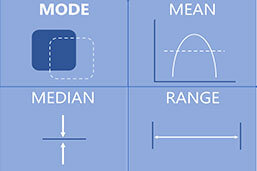
In the field of statistics, the mode is a key measure of central tendency, along with the mean and median. Essentially, the mode represents the most frequently occurring value or values in a data set. It can be applied to nominal data, which can be categorized but not numerically ordered, making it unique among the three measures. The concept of mode is fundamental in various statistical analyses and is crucial for understanding the common values and patterns within a data set.
Definition: Mode
This is the value that repeatedly appears in a given set. In other words, it is the value with the highest frequency in a particular set of data. This is one of the measures of central tendency.
Another measure you can use is the arithmetic mean. This is the average of a dataset, and it is calculated by finding the sum of all the numbers in the set. You then need to divide this figure by the sample size (n).
The third measure is the median. This refers to the middle number in the set.
Multiple modes
Learn the different types of modes in the following:
Unimodal
These are datasets that have one value that appears most frequently. If the data is presented in a histogram, there will only be one peak.
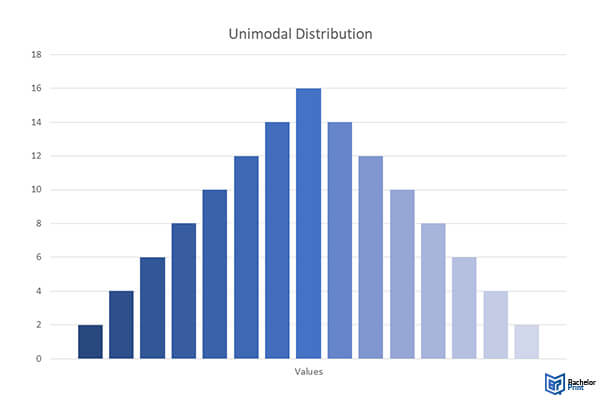
Bimodal
Statistical distributions can have two modes, and these are referred to as bimodal datasets.
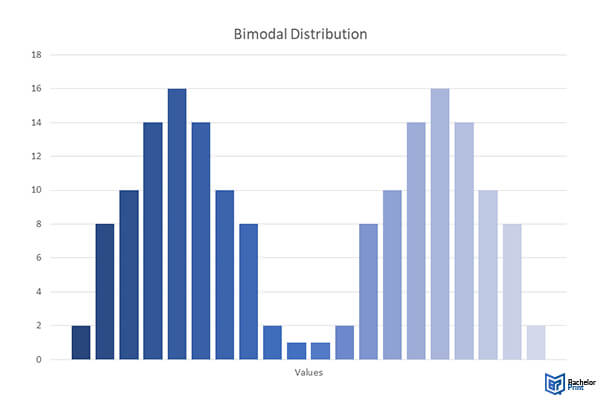
Trimodal
Trimodal datasets have three modes. With these datasets, there are three figures that will be appearing most frequently in the distribution.
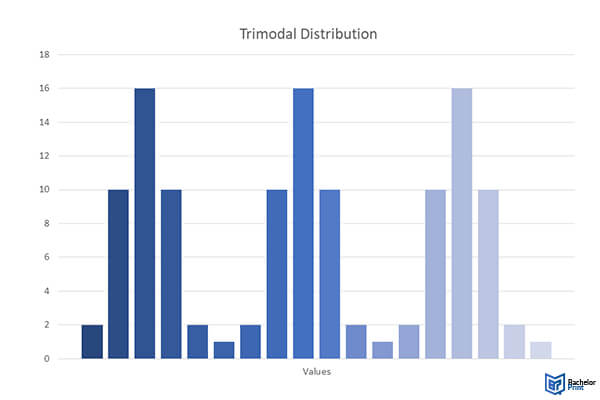
Multimodal
Multimodal datasets have more than three modes. If the dataset is presented in a histogram, there will be more than three peaks.1
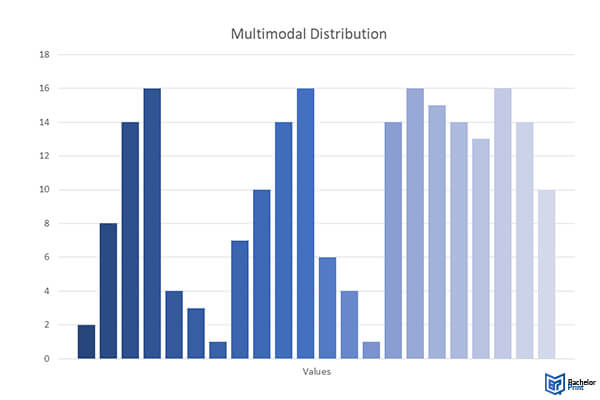
Finding the mode
Finding this value is quite simple. You should follow these steps:
- Start by arranging the numbers in order.
- Then you can count how many times each number appears.
- You should then note the number which appears most frequently.
Numerical mode
A numerical dataset uses numbers instead of natural language. These are also referred to as quantitative data. Since the data uses numbers, you can perform arithmetic operations on it.
Categorical mode
A categorical dataset is a collection of information that is divided into groups. These datasets can either consist of nominal data or ordinal data.
Mode for grouped data
Grouped data is given in the form of class intervals. The mode can either be a class interval or a specific value.
- Modal class: With this option, the mode is given as a category.
- Modal value: The mode here will be given as a specific value instead of a class.
The modal class here is 30 to 40. This is because the highest number of figures occur in this category. The modal value is 30 as it appears twice in the dataset.
No mode
A dataset where all value appears an equal number of times will not have a mode. With such datasets, this method can’t be used to locate the center of the distribution.
When to use the mode
This measure of central tendency should be used with categorical data. In fact, it is the only measure of central tendency that you can use with categorical data.
The level of measurement will also determine whether this method will be the most suitable measure of central tendency. It should be used with ordinal data and discrete data.
It is also worth noting the cases where you should never use this method.
- You shouldn’t use this measure if all values appear the same number of times.
- Also, it shouldn’t be used if there is a very small number of values.
Printing Your Thesis With BachelorPrint
- High-quality bindings with customizable embossing
- 3D live preview to check your work before ordering
- Free express delivery
Configure your binding now!
FAQs
It is used to locate the most common value in a dataset. It helps researchers draw conclusions about different studies.
The different types are:
- Unimodal
- Bimodal
- Trimodal
- Multimodal
You can also use the median and mean as measures of central tendency.
Yes, it will be missing in a dataset where all values appear the same number of times.
